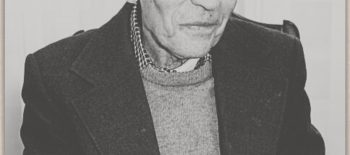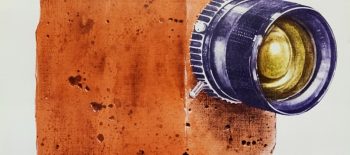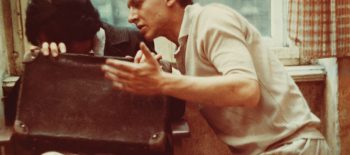The Wende Museum
The Armory, Culver City, California
Sunday, April 10, 2022-Sunday, October 23, 2022
In person at: Wende Museum in Culver City
“Art and Politics: Flags and Banners in Contemporary Art from Poland, Belarus, and Ukraine.”
On June 12, Polish-American director and writer Hanna Sawka, Belarusian-American scholar, writer, and art critic Sasha Razor, and Ukrainian-American artist Molly Surazhsky spoke about the remarkable role of flags and banners in the contemporary art world of Poland, Belarus, and Ukraine. The panel discussion was moderated by Joes Segal, the Wende’s Chief Curator and Director of Programming.
This program was made possible through generous support from the Polish Cultural Institute New York. Presented in conjunction with the exhibition “The Medium is the Message: Flags and Banners.”

Originally used to identify soldiers in battle and ships in international waters, flags have represented large geographic territories since the rise of the nation-state beginning in the late eighteenth century. Like monuments and national anthems, they intend to create a sense of identity based on a shared past, present, and future.
Like many other governments, the communist countries of the twentieth century produced an abundance of flags and banners. They were omnipresent at military parades, sports events, and public gatherings. Apart from national flags, many organizations produced their own richly decorated flags and banners. The Wende Museum holds over 2,000 of these ornamental textiles in its collection.
However, not only the powers that be use flags and banners. Artists have repurposed flags to change or subvert their original meaning for decades, while protestors and counterculture movements worldwide have capitalized on their strong symbolic value and identity-shaping qualities. The Medium is the Message combines Cold War-era political flags from communist countries with contemporary artworks offering critical reflection on the here and now.
Alongside flags from the Wende collection, the exhibition presents contemporary work referencing flags and banners from New Zealand-based multimedia artist Fiona Amundsen on the topic of surveillance; Prague-based Belarusian artist Rufina Bazlova, whose political digital drawings and embroideries went viral within the pro-democracy movement; Los Angeles-based interdisciplinary artist Carolina Caycedo, committed to social and environmental justice efforts; multimedia artist Renée Petropoulos, whose multi-nation flags subvert the associations of national identity; Dutch American sculptor and painter Lara Schnitger, working at the intersection of art and activism; filmmaker and multimedia artist Cauleen Smith, whose banners address the realities and possibilities for Black women in the U.S.; Düsseldorf-based Belarusian conceptual artist Anna Sokolova, presenting abstract studies in light; Los Angeles-based conceptual artist Cole Sternberg, whose project “Free State of California” dreams about an alternative future; and, Ukrainian American multimedia artist Molly Surazhsky, whose textile work critically reflects on modern-day capitalism.
The exhibition also presents works by the Polish American artist Jan Sawka (1946–2012). Beginning in 1968, when he took part in mass student protests across Poland, Sawka used propaganda as a medium for artistic resistance, specifically through banners. He continued exploring this form throughout his career, especially around the collapse of communism in the Soviet Bloc when he developed monumental banner-painting hybrids on loose canvas that reflected on the twentieth-century history of Poland.
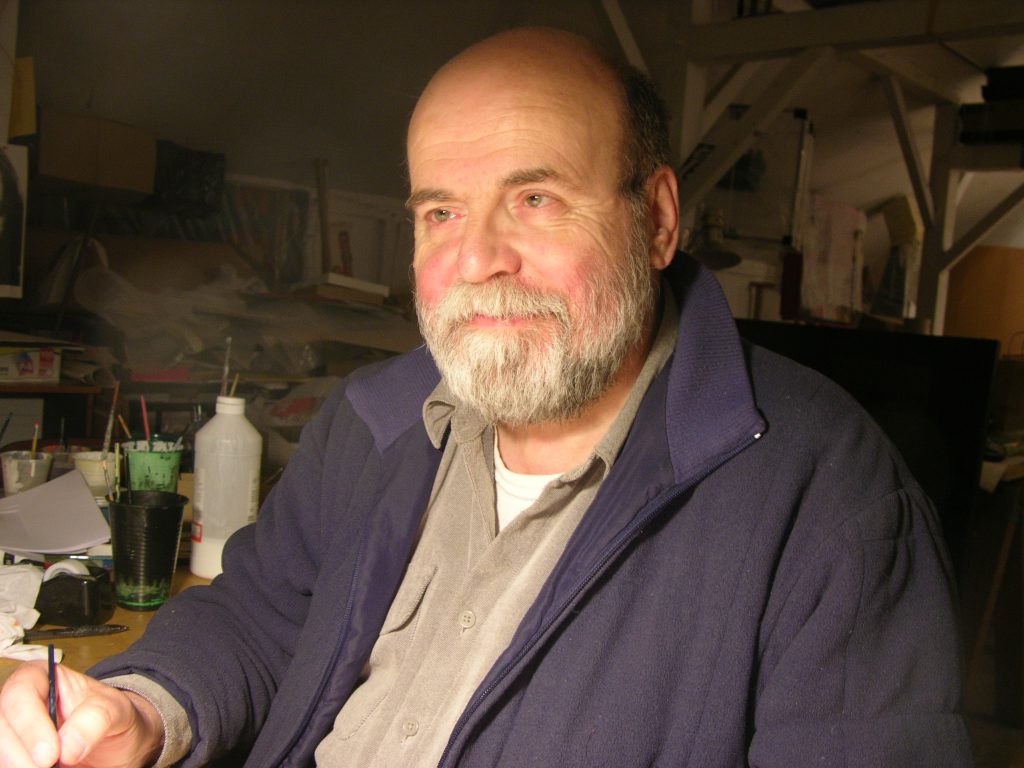
Jan Sawka, was an artist belonging to the “1968 generation” of Polish artists and writers opposed to the communist government who was forced into exile in 1976. He grappled with the visual propaganda of repressive systems throughout his life, starting when, as a student, he created banners for protests against the communist state’s “Anti-Zionist” campaign of 1968. Later, during the revolutions of 1989, Sawka created paintings that appropriated the propaganda-banner format to create expressions about the revolution and that also revealed the brutality of the oppressors. In 1992, the first Minister of Culture of a newly independent Poland, Marek Rostworowski, requested an installation from Sawka for the first presentation of a free Poland at a World Expo. Poland was bankrupt, having just gotten itself out of an exploitative by-proxy occupation. Jan Sawka had just recently worked with the Grateful Dead, having created a monumental art installation for the band’s stadium concerts. He reached out to the band, who stepped in to provide sponsorship for the shipment of the installation to the World Expo in Seville, the largest gift ever from its charitable organization, the Rex Foundation. This was the same year that the band intervened and sponsored the Lithuanian National Basketball team at the Olympics, for similar reasons of a nation being bankrupt, but being able to represent itself as a free nation for the first time at a major world event.
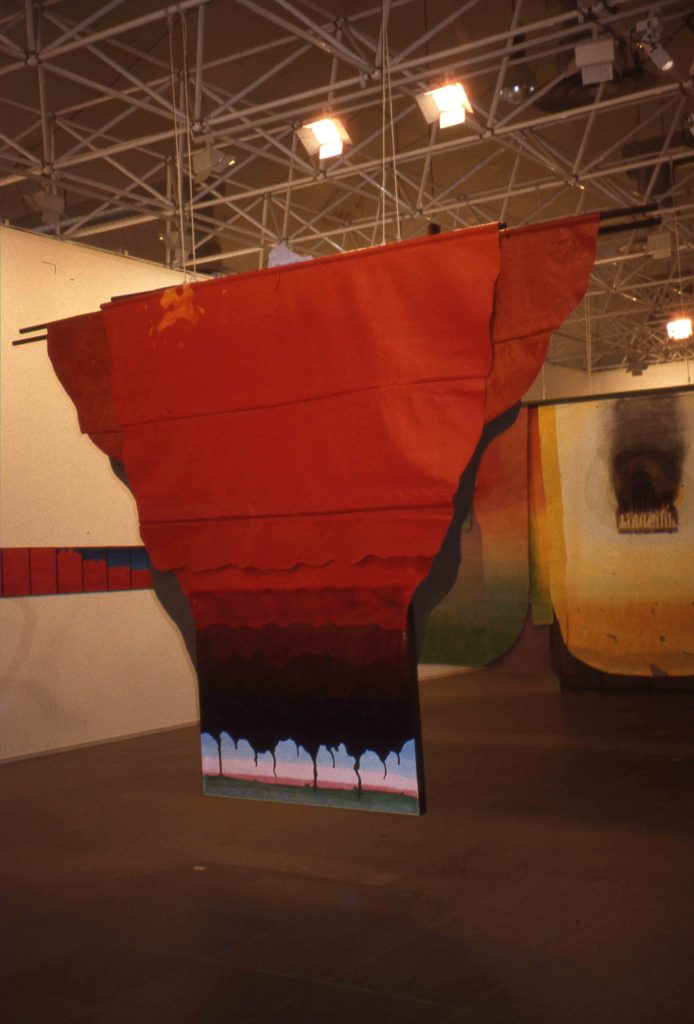
The title of the installation Jan Sawka showed in the Polish Pavilion at the 1992 Expo in Seville is “My Europe.” The installation consists mainly of large banner-paintings addressing the devastation of war and occupation, yet ending with a triptych of banners, over 8 feet in length each, portraying the hope of lands and people being able to rise from destruction and oppression. According to The New School’s Jeffrey Goldfarb in his 2013 article titled “Jan Sawka: The Power of the Not So Powerless” for Public Seminar, “This is a piece that has the quality of a magnum opus. It is piece by a citizen of Europe from Poland, personally at the center of the great sufferings of his nation. It is not nationalist in any way. Rather, it is a mournful reflection on national experience on the European killing fields.”
Article by Jeffrey Goldfarb of the New School for Social Research that includes a section about Jan Sawka’s “My Europe” banners: Jan Sawka: The Power of the Not So Powerless – Public Seminar
Images and catalog from the 1992 installation at the World Expo.
Hanna Maria Sawka holds an MFA in Film, TV and Theater Directing from the Polish National Film School in Lodz, a BA cum laude from Smith College in English and Theater. She teaches New Media in a full-time capacity at SUNY Orange. Her film, “Beyond Iconic: Photographer Dennis Stock,” was a finalist at the São Paulo International Film Festival and an Official Selection at DOC NYC, Starz Denver, and other festivals. She has also directed professionally for television (crime reenactments for Polish National Television) and the theater. Together with her mother, Hanna “Hanka” Sawka, Hanna Maria co-manages the estate of her late father, Jan Sawka. She began curating exhibitions in 2012, when, together with Jan Sawka, she co-curated an exhibition titled The Japanese Touch: Masterworks of Japanese Print-Making at Mohonk Arts in High Falls, NY. In 2012, together with Debra Klein, she co-curated the critically lauded Personal Equilibrium exhibition of Jan Sawka’s hand-painted journals at the Stevenson Library at Bard College, Annandale-on-Hudson, (Nov. 2012 – Feb. 2013), which turned out to be the first posthumous exhibition of work by her father. In 2013, together with Evonne Davis, she co-curated Reflections on Everyman: The Work of Jan Sawka at Gallery Aferro in Newark, New Jersey, which was accompanied by a symposium at Rutgers University’s Paul Robeson Gallery. In 2020, together with Dr. Frank Boyer, she co-curated two large exhibitions of Jan Sawka’s art at academic museums: “Golden West: Jan Sawka’s California Dream” at the Robert and Frances Fullerton Museum of Art at California State University San Bernardino and “Jan Sawka: The Place of Memory (The Memory of Place) at State University of New York at New Paltz.
The Medium is the Message: Flags and Banners is generously supported by the Andy Warhol Foundation for the Visual Arts and the Cotsen Foundation for Academic Research.



